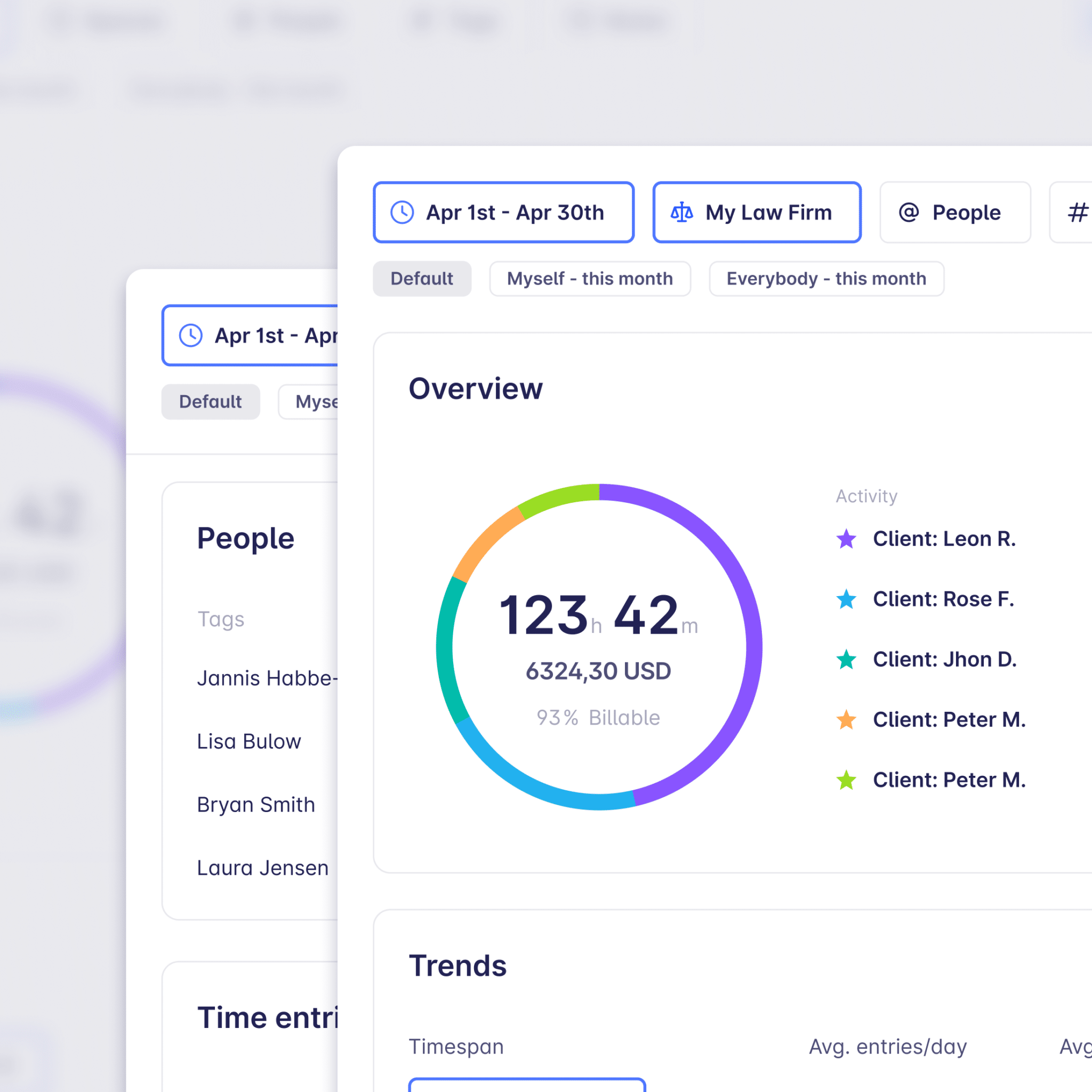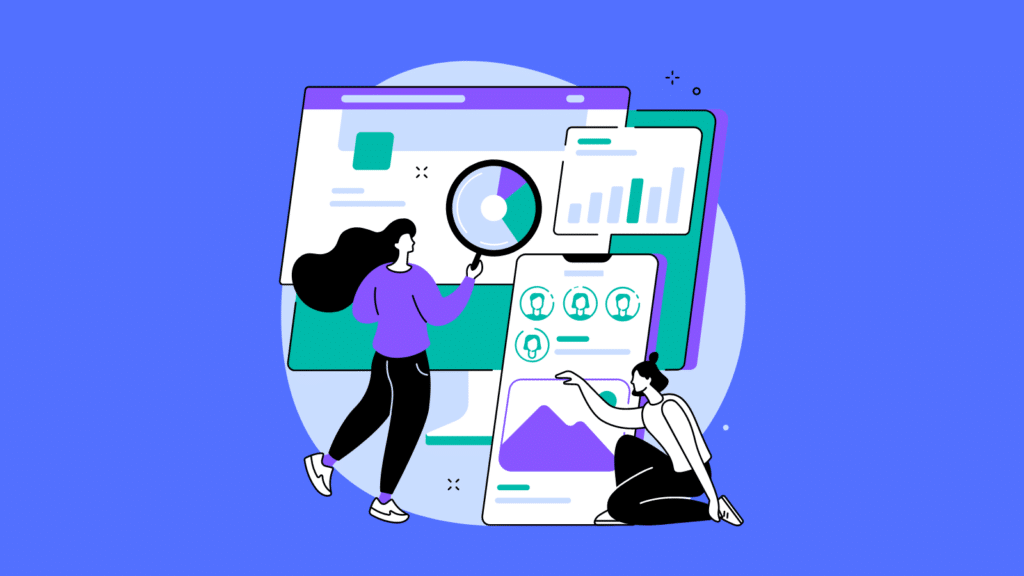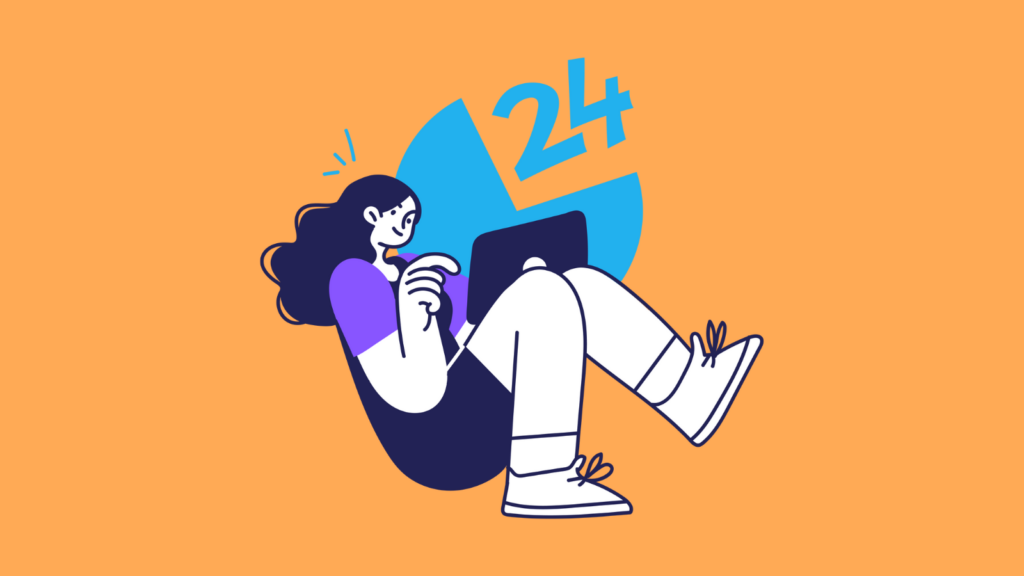Customer Retention vs. Customer Acquisition: What Are The Differences
In the competitive landscape of today’s business world, companies are trying harder than ever to maintain a solid customer base while continuously expanding their reach.
Two primary strategies are crucial in achieving this goal: customer retention and acquisition. While both these strategies contribute positively to a company’s growth, they operate differently.

Timeular’s easy and smart experience, paired with its powerful reporting functionality, makes billing time a delight
Customer retention focuses on nurturing already existing customers and ensuring their loyalty, whilst customer acquisition aims to attract and win over new customers.
Understanding the differences between these two lines is vital for businesses to plan effective marketing and implement customer management strategies.
In this article, we will explore the differences between customer retention and acquisition, exploring their respective purposes, methods, and impact on long-term business success.
What is customer acquisition?
Customer acquisition is the process of attracting and acquiring new customers.
It involves various marketing and sales strategies to increase the customer base and push revenue growth.

When should customer acquisition be your top priority?
Customer acquisition is a top priority in many situations, such as:
Entering a new market
Customer acquisition becomes extremely important when a company enters a new market or launches a new product or service.
Acquiring new customers is essential to gain market share and establish a presence in the target market.
Business growth
Customer acquisition takes priority if a company wishes to expand its operations, increase its market share, or meet revenue targets.
Acquiring new customers is vital for powering growth and sustaining business success.
Competition
In a highly competitive industry where customer churn rates are incredibly high, customer acquisition becomes a top priority.
It helps companies counteract the loss of customers to competitors and maintain market competitiveness.
Limited customer base
If a company operates in a niche market with a limited customer base, it may need to prioritize customer acquisition to expand its reach and increase its market share.
Start-ups and early-stage businesses
For start-ups and early-stage businesses, customer acquisition often takes precedence as they aim to establish a foothold in the market, gain traction, and generate revenue.
At this stage, attracting a sufficient customer base is vital for sustainable growth.

Timeular’s easy and smart experience paired with it’s powerful reporting functionality makes reporting time a delight
What is customer retention?
Customer retention refers to the actions and strategies employed by businesses to encourage already existing customers to continue their relationship, repeat purchases, and remain loyal to the brand over an extended period.
It focuses on nurturing the existing bond with the current customers to maximize their lifetime value. Learn how to increase revenue from existing customers.

When should customer retention be your top priority?
Customer retention should be a top priority in the following scenarios:
Customer lifetime value
When customers have a high potential for repeat purchases or have a significant lifetime value, retaining them becomes necessary.
It is more cost-effective to retain existing customers than constantly acquire new ones, as loyal customers tend to spend more over time.
Customer satisfaction issues
If a company is dealing with customer satisfaction issues, focusing on customer retention becomes extremely important.
By addressing and resolving customer concerns promptly, businesses can improve satisfaction levels.
Competitive advantage
In industries with intense competition, customer retention becomes vital for gaining a competitive advantage.
Satisfied and loyal customers can act as brand advocates, spreading positive viva-voce and helping to attract new customers.
Subscription or membership-based business models
For businesses operating on a subscription or membership basis, such as gyms, customer retention is critical.
Ensuring that customers continue their subscriptions or memberships is essential for maintaining a stable revenue stream and long-term profitability. We explain in detail the difference between Revenue vs. Profit in an extensive article.
Personalized services
If a company offers personalized services, customer retention must become a priority.
Building strong relationships and providing exceptional customer experiences can foster loyalty and encourage customers to remain with the brand.
Market saturation
In mature markets where customer acquisition becomes increasingly challenging, customer retention becomes a top priority.
Retaining existing customers becomes crucial for sustaining revenue growth when the pool of potential new customers is limited.
It is important to note that customer acquisition should not overshadow customer retention. For instance, while acquiring new customers is crucial, retaining existing customers is equally important for long-term profitability.
Striking a balance between acquisition and retention strategies is necessary for sustainable business growth and long-term success.
- Read our blog “Examples of Artificial Intelligence in business” and find out how AI tools help in customer relationships.

How can time tracking help with customer retention?
Time tracking can indirectly contribute to customer retention by allowing businesses to better manage their resources to better serve clients. Time tracking leads to enhanced productivity and provides a more efficient and satisfactory overall customer experience.
Here are some ways time tracking can help with customer retention:
- Accurate billing and invoicing
Accurate time tracking allows businesses to bill customers realistically. Transparency and accuracy in client billing can strengthen trust and credibility with customers, minimizing billing disagreements and improving the overall relationship.
- Improved service efficiency
By analyzing time spent on projects and tasks, companies can identify inefficiencies and time wasters.
Streamlining processes and eliminating time wastage can lead to faster response times, quicker issue resolution, and an overall improved service.
- Meeting commitments and deadlines
By tracking time and monitoring progress in a project, businesses can better manage their goals and deadlines.
Teams and companies can identify potential bottlenecks or delays early on and take proactive measures to ensure effective timely delivery. Meeting customer expectations and delivering on promises significantly contributes to customer satisfaction and retention.
- Resource allocation
Time tracking helps businesses gain insights into how their resources, such as employees’ time and skills, are allocated.
This information enables better resource planning and allocation, ensuring that the right people are assigned to the right tasks or projects.
Efficient resource allocation leads to smoother project delivery, and timely customer support, and ultimately elevates customer satisfaction.
Read also: How to allocate resources
- Identifying value-added activities
Time tracking allows businesses to analyze how their time is spent on different customer-related activities. It helps identify high-value activities that directly contribute to customer satisfaction and retention.
By focusing on these activities and optimizing resources accordingly, businesses can enhance the customer experience and strengthen customer loyalty.
- Performance evaluation and training
Time tracking data can be used for evaluating and tracking employee performance and identifying areas for possible improvement.
By addressing performance gaps through training and development initiatives, businesses can enhance their employees’ skills and knowledge, leading to better customer service and retention.
So, while time tracking itself may not directly impact customer retention, it provides valuable data and accurate time reports insights that enable businesses to optimize their operations, improve service quality, and deliver a more satisfying customer experience, ultimately fostering customer loyalty and retention.
Slutsats
Now, you know the differences between customer retention and customer acquisition.
Striking a balance between the two strategies is crucial for sustained success in a competitive market.
Customer retention focuses on nurturing existing customers, fostering loyalty, and generating repeat business, while customer acquisition aims to attract and convert new customers.
Both strategies play important roles in business growth. While customer acquisition targets expanding the customer base, customer retention emphasizes building strong, long-term relationships.
VANLIGA FRÅGOR
Customer retention cost refers to the expenses incurred to retain existing customers and keep their loyalty, while customer acquisition cost refers to the expenses associated with acquiring new customers.
Customer retention is generally cheaper than customer acquisition due to lower marketing costs, reduced sales efforts, higher conversion rates, repeat business, and the potential for customer loyalty.
The relationship between customer retention and Customer Lifetime Value (CLV) is that customer retention directly influences CLV.
Customer retention refers to the ability to keep existing customers engaged and loyal to the brand over time. CLV represents the total value a customer brings to a business throughout their entire relationship.
By retaining customers and extending their lifetime with the company, CLV increases as customers make repeat purchases, provide referrals, and potentially become advocates, resulting in greater overall value for the business.